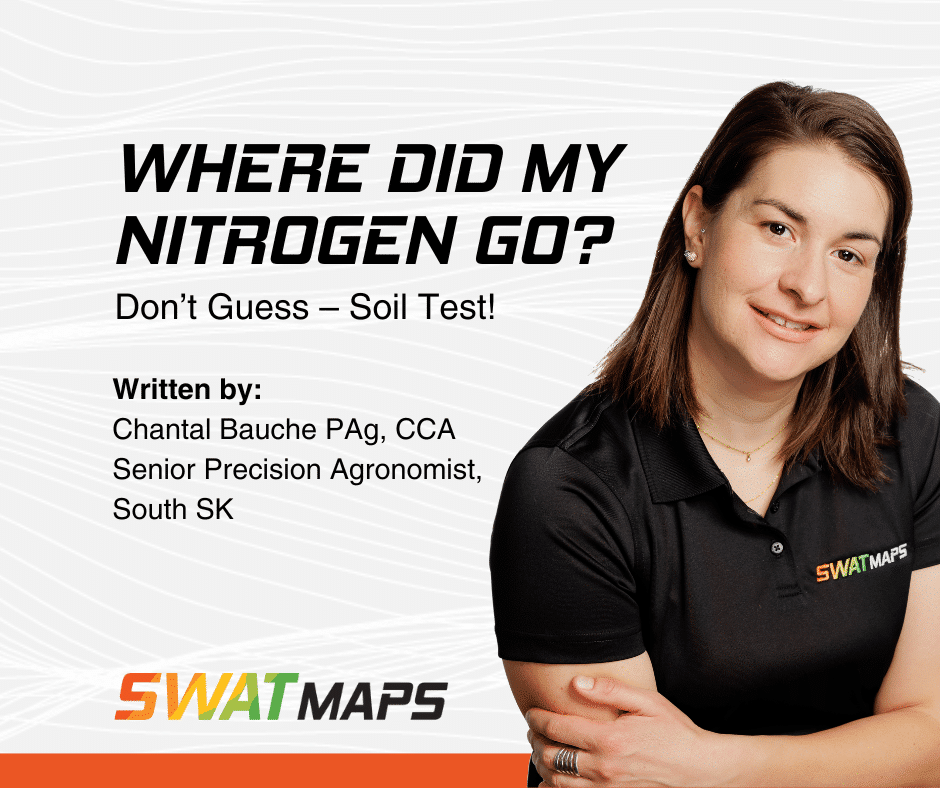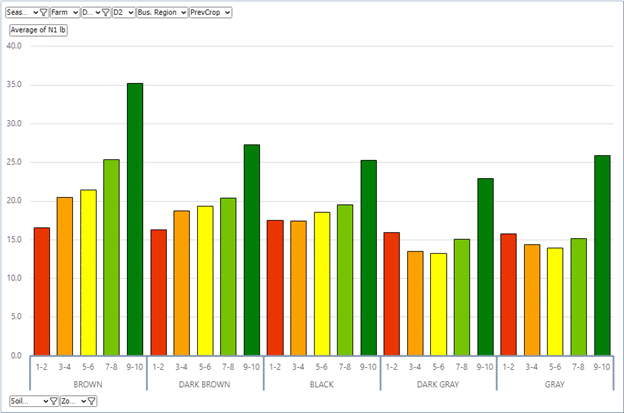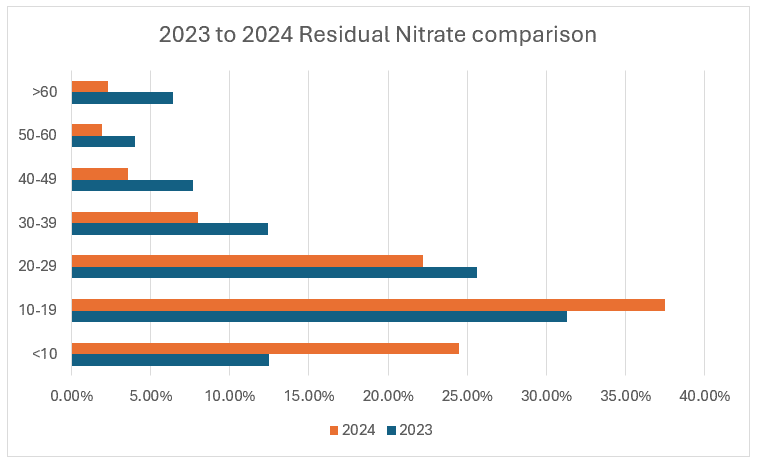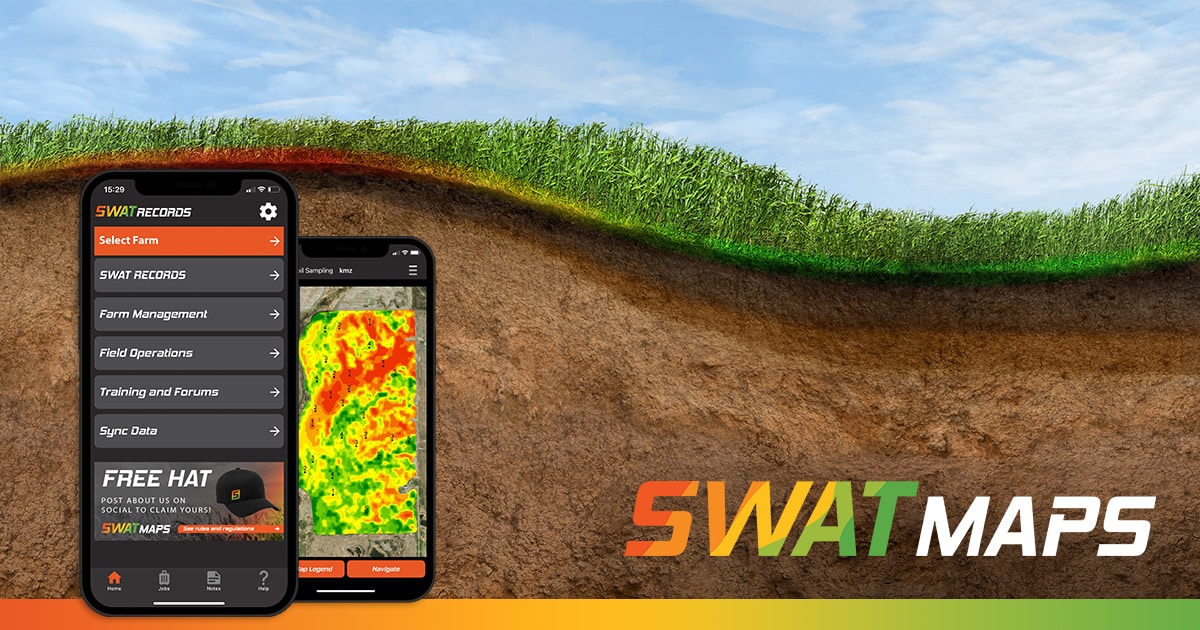Where did my Nitrogen go? Don’t guess – soil test!

Saskatchewan, Canada - As fall soil sample results roll in from the central prairie region, it becomes clear that nitrate soil residual levels are lower than what we were expecting. Consensus from harvest is that yields were below target even though crops had a great start and looked good until the end of June. The lack of moisture in some areas for all of July and August, along with the intense heat that came with July most likely negatively affected yields.
When this happens, we tend to see it reflected in our fall soil test results. However, this year nitrate levels seem to be low no matter the field or area we look at. Here we have summarized all of our soil sample results from this fall by soil zone and SWAT zone and also compared them to 2023 fall sample results.

Typically anything below 20lbs of residual nitrate would be considered depleted which we see quite commonly across all soil zones in SWAT zones 1-6, except for maybe in the brown soil zone which has slightly higher residual nitrate values.
And when we look at the comparison to 2023 soil nitrate levels, we have more fields in the <20 lbs range of residual nitrate in 2024 then we did in 2023 when looking at all soil zones and SWAT map zones combined. There is a clear shift to lower nitrates with significant reductions in excessively high testing areas (>60 lbs) as well, which helps reduce environmental losses over winter or next spring.

Our best explanation to this trend for fall of 2024 seems to be the pattern in which the crop grew. There was a lot of crop growth early on and that biomass would have had a large nutrient demand as most crops require a large portion of their nutrients prior to tillering in cereals and bolting in canola. These timelines would match up to when growing conditions were ideal. When environmental conditions took a turn for the worse (July/Aug) the crop nutrient demand decreases as nutrients are only needed to fill seed and carry out the yield potential that was set earlier (either hit or miss it). Our hope is that the nitrogen is tied up in crop residue which will eventually be returned to the soil through decomposition and mineralization.
The other possible explanation for lower nitrates is less mineralization. Under dry topsoil conditions, microbes are less active, and therefore we don’t see as much nitrogen coming from mineralization.
This is why soil sampling in the fall is very important, especially by SWAT zone, to determine the residual nutrients in your fields. The data reinforces that despite average soils being low, there can still be other areas that test very high or even lower, so understanding that variability can help make better fertilizer decisions. Don’t guess – soil test!









